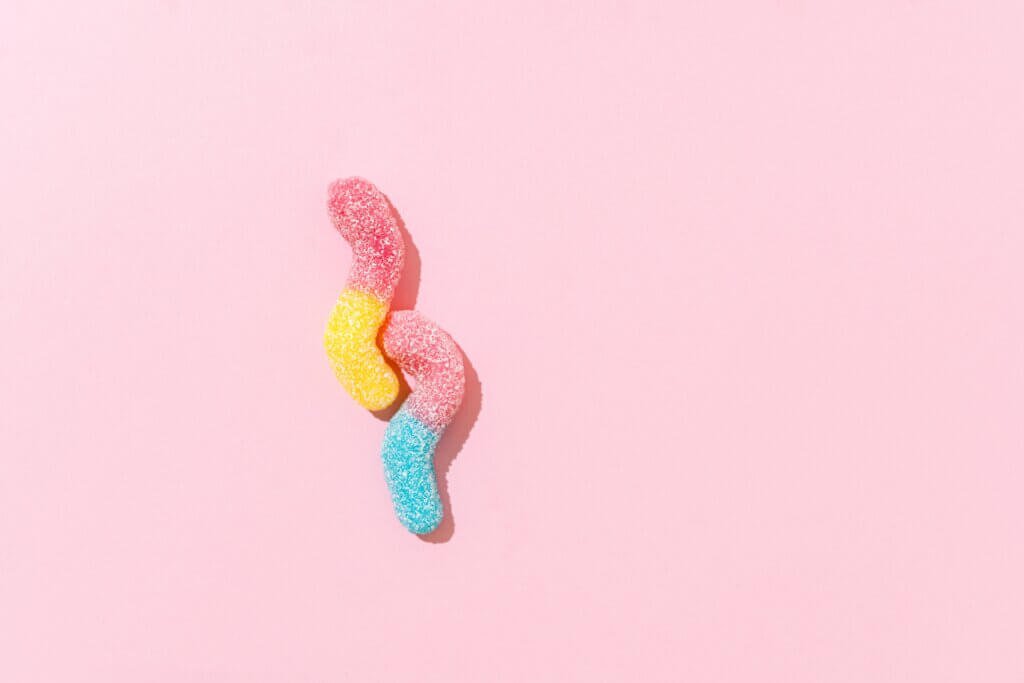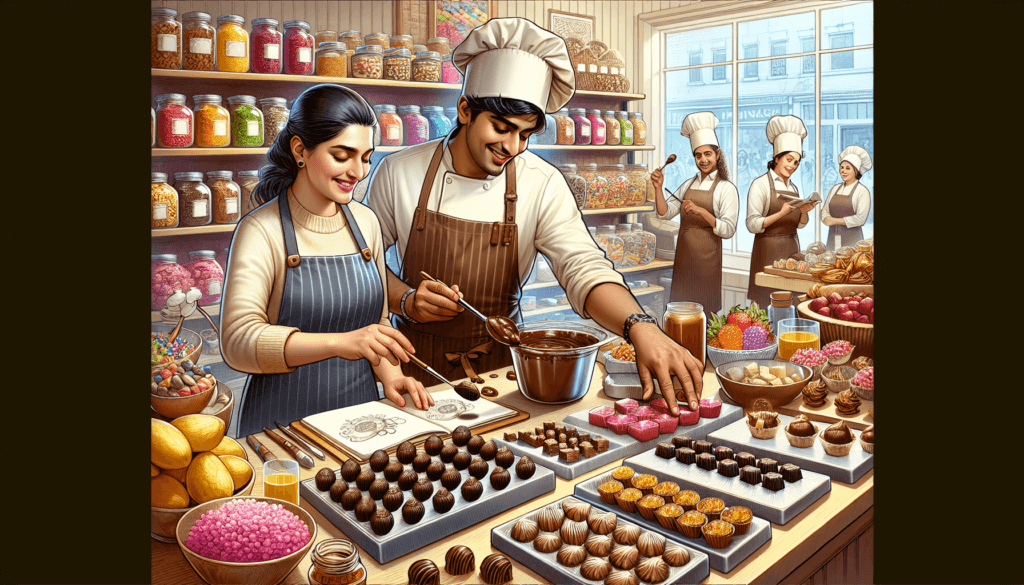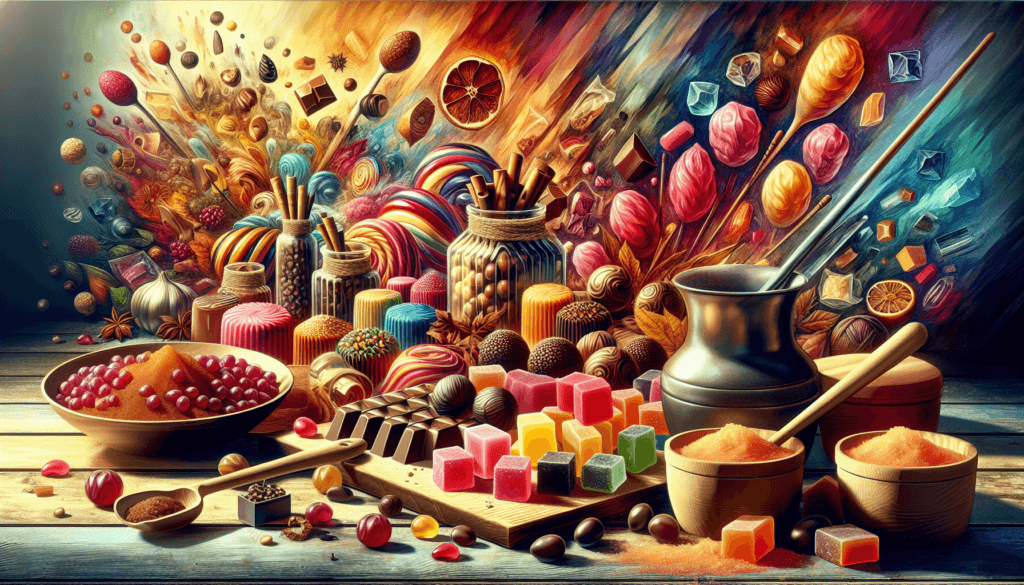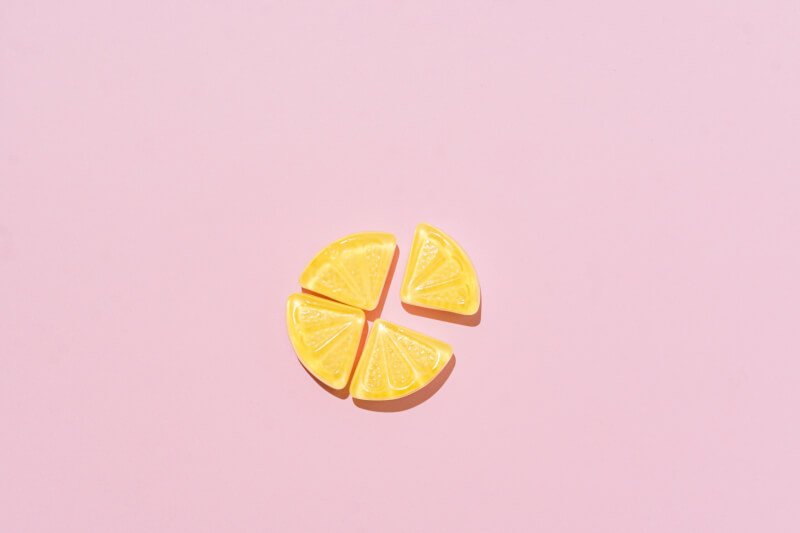Imagine the joy of creating your own delectable treats right in the comfort of your own kitchen. In “The Art of Making Homemade Candies and Confections,” you will embark on a delicious journey filled with delightful flavors and sweet surprises. From melt-in-your-mouth chocolates to chewy caramels, this article will guide you through the secrets and techniques of making homemade candies and confections that will impress your friends and family. Get ready to unleash your inner candy-maker and indulge in the sweet satisfaction of handcrafted goodies.

Ingredients for Homemade Candies and Confections
Types of Sweeteners
When it comes to making homemade candies and confections, the type of sweetener you choose can greatly affect the taste and texture of your treats. There are various sweeteners to choose from, each with its own unique properties. Granulated sugar is the most commonly used sweetener, providing sweetness and structure to candies. However, other options such as honey, corn syrup, and agave syrup can be used to add different flavors and textures to your creations. It’s important to note that each sweetener may require different cooking times and temperatures, so be sure to follow your recipe closely.
Flavorings and Extracts
Adding flavorings and extracts is a great way to elevate your homemade candies and confections. Whether you’re looking for fruity, floral, or nutty flavors, there is a wide array of options to choose from. Vanilla extract is a staple in many candy recipes, providing a warm and comforting taste. Other popular extracts include almond, mint, and lemon, which can add a burst of flavor to your treats. Additionally, you can experiment with different flavorings such as rosewater, orange blossom water, or even coffee extract to create unique and delicious candies.
Types of Chocolate
Chocolate is an essential ingredient in many candies and confections, and choosing the right type can make a big difference in the final result. There are various types of chocolate to choose from, each with its own characteristics and flavors. Dark chocolate has a higher percentage of cocoa solids and a rich, intense taste. Milk chocolate is sweeter and creamier, making it a popular choice for candies. White chocolate, despite not containing cocoa solids, can still add a sweet and creamy flavor to your treats. Experiment with different types of chocolate to find your favorite combinations with other ingredients.
Nuts and Dried Fruits
Nuts and dried fruits not only add texture and flavor to your homemade candies and confections but also provide nutritional value. From almonds and peanuts to raisins and cranberries, the options for incorporating nuts and dried fruits into your treats are endless. Chopped nuts can add a satisfying crunch, while dried fruits bring a naturally sweet and chewy element. You can mix and match different varieties to create your own unique combinations. Just be sure to chop or slice them to a size that complements the size of your candies.
Other Optional Ingredients
In addition to the essential ingredients mentioned above, there are countless other optional add-ins that can take your homemade candies and confections to the next level. Coconut flakes, crushed cookies, sprinkles, and even edible flowers are just a few examples of ingredients you can incorporate. These extras not only add visual appeal but also contribute to the overall flavor and texture of your treats. Get creative and try different combinations to find your own signature creations.
Essential Equipment for Making Homemade Candies and Confections
Candy Thermometer
A candy thermometer is a must-have tool when it comes to making homemade candies and confections. It ensures that your candy mixture reaches the correct temperature, which is crucial for achieving the desired consistency and texture. Different candies require different temperature ranges, so it’s important to invest in a reliable candy thermometer that can accurately measure high temperatures.
Double Boiler or Heatproof Bowls
When melting chocolate or other ingredients, it’s important to use gentle heat to prevent scorching or burning. A double boiler or heatproof bowl set over a pot of simmering water allows for controlled and even heating. This method helps to melt ingredients slowly and ensures they remain smooth and perfectly melted without any lumps.
Silicone Mats or Parchment Paper
Silicone mats or parchment paper are invaluable when it comes to making homemade candies and confections. These non-stick surfaces provide a perfect place to spread out or shape your candies as they cool and set. Whether you’re making fudge, brittle, or molded chocolates, silicone mats or parchment paper prevent sticking and make clean-up a breeze.
Candy Molds
If you want to create candies in various shapes and sizes, candy molds are a must-have. These molds come in a wide range of designs, from simple geometric shapes to intricate patterns. Using candy molds allows you to easily shape your candies and create professional-looking treats. With a variety of molds available on the market, you can let your creativity shine and make candies that are as visually appealing as they are delicious.
Whisk or Wooden Spoon
While it may seem simple, having a whisk or wooden spoon is essential for making homemade candies and confections. These tools are used for stirring, mixing, and incorporating ingredients. From stirring chocolate to prevent burning to mixing in nuts and dried fruits into your candy base, a whisk or wooden spoon ensures that all the ingredients are evenly distributed and properly combined.

Preparing the Basic Candy Base
Choosing the Right Recipe
When it comes to making homemade candies and confections, choosing the right recipe is crucial. It’s important to consider the level of difficulty, the ingredients required, and the cooking technique involved. For beginners, starting with simple recipes that require minimal equipment and ingredients is a good way to familiarize yourself with the process. As you gain experience and confidence, you can move on to more complex recipes that challenge your skills and allow you to explore different flavors and techniques.
Measuring Ingredients Precisely
Precise measurements are key when making candies and confections. Unlike cooking, where you can often adjust seasonings and ingredients to taste, candy-making is a science that requires accuracy. Investing in a good set of measuring cups and spoons is essential to ensure consistent results. Be sure to follow the measurements precisely as indicated in the recipe for the best outcome.
Melting Chocolate and Sweeteners
Melting chocolate and sweeteners correctly is crucial to achieve smooth and velvety textures in your candies. Whether you’re using a double boiler or heatproof bowls, it’s important to melt the ingredients slowly and avoid overheating or scorching. Heat the chocolate and sweeteners gently until they are fully melted and smooth. This will ensure that the final candies have a glossy finish and a satisfying melt-in-your-mouth texture.
Adding Flavorings and Extracts
Once your chocolate and sweeteners are melted and smooth, it’s time to incorporate flavorings and extracts. Whether you’re using vanilla extract, mint extract, or any other flavorings, add them gradually and taste as you go. Different candies require different levels of flavoring, so it’s important to adjust accordingly. Stir the flavorings and extracts into the melted mixture until evenly distributed for a well-rounded taste.
Mixing in Nuts and Dried Fruits
If your recipe calls for nuts and dried fruits, this is the stage where you add them to your candy base. Fold in the chopped nuts or dried fruits gently to ensure an even distribution. Avoid overmixing, as this can lead to unevenly shaped candies. The nuts and dried fruits not only add texture but also enhance the flavors and make your candies more visually appealing.
Creating Different Shapes and Designs
Using Candy Molds
Candy molds are a fantastic way to create candies in various shapes and designs. Simply pour your candy base into the molds and allow them to set. Once set, gently remove the candies from the molds, and you’ll be left with perfectly shaped treats. The molds range in size and design, so you can easily find ones that suit your preferences and the occasion. From hearts and stars to animal shapes and holiday-themed molds, the possibilities are endless.
Hand Rolling and Shaping
If you prefer a more rustic or personalized look for your candies, hand rolling and shaping is a great option. After preparing your candy base, roll small portions into balls or shape them into logs or squares. You can even get creative and form intricate designs or patterns using your hands. This method allows for more flexibility in creating custom shapes and sizes to suit your taste.
Using Cookie Cutters
Cookie cutters aren’t just for cookies! They can also be used to create beautifully shaped candies. Simply press your candy base into a sheet or pan and allow it to set. Once set, use cookie cutters in various shapes and sizes to cut out your candies. This method works well with fudges and other firm candy bases. The resulting candies will have defined shapes and clean edges.
Piping with a Pastry Bag
For more intricate designs and patterns, piping with a pastry bag can achieve stunning results. Fill a pastry bag with your candy base and choose a piping tip that suits your desired design. Squeeze the pastry bag to release the candy base onto a silicone mat or parchment paper, creating swirls, letters, or any other decorative shapes. This method requires a steady hand and some practice, but the artistic possibilities are endless.
Creating Marbled or Swirled Patterns
Marbling or swirling is a popular technique that adds visual interest to your candies. After pouring your candy base into a mold or sheet, use a toothpick or skewer to create swirls or patterns by dragging it through the candy. This creates beautiful marbled effects and unique designs. Experiment with different colors and flavors to create stunning candies that are as pleasing to the eye as they are to the palate.

Tempering Chocolate for a Professional Finish
Understanding Chocolate Temperatures
Tempering chocolate is a process that involves heating and cooling chocolate to specific temperatures to achieve a shiny finish and a firm, snappy texture. Different types of chocolate have different temperature ranges for tempering. Dark chocolate, for example, is typically tempered between 115°F and 120°F (46°C and 49°C), while milk and white chocolates have slightly lower tempering temperatures. It’s important to follow the tempering instructions for the specific type of chocolate you’re using to ensure the best results.
Seeding Method
One popular method for tempering chocolate is the seeding method. Start by melting two-thirds of your chocolate over a double boiler or in a heatproof bowl set over simmering water. Once melted, remove it from the heat and stir in the remaining one-third of unmelted chocolate. Continue stirring until the remaining chocolate is fully melted and you achieve a smooth consistency. The additional chocolate acts as the “seed” and brings down the temperature of the melted chocolate, promoting the formation of stable cocoa butter crystals.
Tabling Method
The tabling method, also known as the French method, involves pouring melted chocolate onto a cool marble slab and working it back and forth with a scraper to gradually cool it down. As the chocolate is spread and worked, it forms small crystals that give it a shiny appearance and a firm texture. This method requires a bit more skill and practice, as it relies on visual cues to determine when the chocolate has reached the correct temperature. Once tempered, the chocolate can be used for dipping or coating candies.
Marble Slab Method
The marble slab method is similar to the tabling method but can be done on any cool, non-porous surface. This method is ideal for home cooks who may not have access to a marble slab. Simply spread melted chocolate on a cool baking sheet or granite countertop and use a scraper to work the chocolate back and forth until it cools to the desired temperature. This method requires careful monitoring of the chocolate’s temperature to ensure consistent results.
Avoiding Common Chocolate Tempering Mistakes
Tempering chocolate can be a delicate process, and certain mistakes should be avoided to achieve the best results. One common mistake is incorporating any moisture into the chocolate, as even a small amount can cause the chocolate to seize or become grainy. It’s also important to avoid overheating the chocolate, as this can result in a dull finish and a soft texture. Additionally, be sure to work in a cool environment, as warm temperatures can affect the tempering process. With practice and attention to detail, you can master the art of tempering chocolate and elevate your homemade candies to a professional level.
Fruit-based Candies and Confections
Making Fruit Jellies
Fruit jellies are a delightful treat that bursts with fruity flavors. To make fruit jellies, start by preparing a fruit purée by blending fresh or frozen fruit until smooth. Strain the purée to remove any seeds or pulp. In a saucepan, combine the fruit purée with sugar and cook over medium heat, stirring constantly, until the mixture reaches the gel point. The gel point can be determined by using a candy thermometer or by performing a plate test. Once the mixture reaches the gel point, pour it into molds or a shallow dish and allow it to cool and set. Once set, cut the jellies into bite-sized pieces and toss them in sugar to prevent sticking.
Fruit-Flavored Taffy
Fruit-flavored taffy is a chewy and stretchy candy that is loved by both kids and adults. To make fruit-flavored taffy, start by combining sugar, corn syrup, water, and flavored extract in a large saucepan. Cook the mixture over medium heat, stirring constantly, until it reaches the soft-ball stage. The soft-ball stage can be determined by dropping a small amount of the mixture into a glass of cold water and forming a soft ball when rolled between your fingers. Once the mixture reaches the soft-ball stage, remove it from the heat and allow it to cool slightly. Butter your hands and pull the taffy until it becomes light in color and holds its shape. Roll the taffy into long ropes and cut them into bite-sized pieces. Wrap the pieces in wax paper or cellophane wrappers for a traditional touch.
Fruity Gummies and Chews
If you’re a fan of chewy candies, fruity gummies and chews are a perfect choice. To make fruity gummies, start by combining fruit juice, sugar, and gelatin in a saucepan. Heat the mixture over low heat, stirring constantly, until the sugar and gelatin are dissolved. Remove the saucepan from the heat and allow the mixture to cool slightly before pouring it into silicone molds. Refrigerate the molds until the gummies are set. Once set, remove the gummies from the molds and toss them in sugar to prevent sticking. For chewy fruit candies, follow a similar process but use less gelatin to achieve a soft and chewy texture.
Candied Citrus Peels
Candied citrus peels are a delicious treat that can be enjoyed on their own or used as a topping or mix-in for other desserts. To make candied citrus peels, start by removing the peels from citrus fruits such as oranges, lemons, or grapefruits. Blanch the peels in boiling water to remove bitterness, then simmer them in a sugar syrup until they become translucent. Remove the peels from the syrup and allow them to cool slightly. Toss the cooled peels in granulated sugar and allow them to dry completely. The candied citrus peels can be stored in an airtight container for several weeks, making them a handy ingredient to have on hand for your homemade candies and confections.
Fruit Bark and Brittle
Fruit bark and brittle offer a crunchy and sweet way to enjoy dried fruits. To make fruit bark, start by melting chocolate until smooth and spread it in a thin layer on a silicone mat or parchment paper. Sprinkle your favorite combination of dried fruits and nuts over the chocolate and gently press them into the surface. Allow the bark to cool and set before breaking it into irregular-sized pieces. For fruit brittle, combine a mixture of dried fruits and nuts with a caramelized sugar syrup. Pour the mixture onto a silicone mat or parchment paper and spread it into a thin layer. Once cooled, break the brittle into pieces and enjoy the sweet and crunchy treat.

Nutty Treats: Brittle and Pralines
Classic Peanut Brittle
Classic peanut brittle is a perfect combination of sweet and salty flavors and a satisfying crunch. To make peanut brittle, start by cooking sugar, corn syrup, and water in a saucepan until it reaches a light amber color. Add peanuts and butter to the mixture and stir until the butter is melted and the mixture is well combined. Quickly pour the mixture onto a silicone mat or greased baking sheet and spread it into a thin layer. Allow the brittle to cool and harden completely before breaking it into small pieces and storing in an airtight container.
Almond Brittle with Sea Salt
Almond brittle with sea salt takes the classic brittle to a new level with the addition of a savory element. To make almond brittle with sea salt, follow the same process as the classic brittle, but substitute almonds for peanuts. Once the brittle is spread onto the silicone mat or greased baking sheet, sprinkle sea salt evenly over the surface. Allow the brittle to cool and set before breaking it into pieces. The combination of sweet caramel, crunchy almonds, and a hint of sea salt creates a delightful flavor profile that is sure to impress.
Cashew Brittle with a Twist
Cashew brittle offers a unique taste and buttery texture that is hard to resist. To make cashew brittle, use the same process as the classic brittle, but use cashews instead of peanuts or almonds. The rich and creamy flavor of cashews pairs perfectly with the sweet caramelized sugar, creating a treat that is both indulgent and addictive. Break the cooled and hardened cashew brittle into small pieces and store them in an airtight container, or package them up as a thoughtful homemade gift.
Simple Pecan Pralines
Pecan pralines are a beloved Southern treat that is known for its creamy and nutty flavor. To make simple pecan pralines, combine sugar, half-and-half, butter, and pecans in a saucepan. Cook the mixture over medium heat, stirring constantly, until it reaches the soft-ball stage. Remove the saucepan from the heat and allow the mixture to cool slightly before dropping spoonfuls onto a silicone mat or greased parchment paper. Allow the pralines to cool and set completely before enjoying their rich and buttery goodness.
Hazelnut Praline Truffles
Hazelnut praline truffles combine the delicious flavors of hazelnuts and chocolate into a decadent treat. To make hazelnut praline truffles, start by making a praline paste by caramelizing sugar and blending it with toasted hazelnuts until smooth. Mix the praline paste with melted chocolate and allow the mixture to cool and set. Once chilled, roll the mixture into small truffle-sized balls and coat them in cocoa powder or chopped hazelnuts for an extra touch of texture. These indulgent truffles are perfect for special occasions or as a luxurious homemade gift.
Creamy Delights: Fudge and Caramels
Traditional Chocolate Fudge
Traditional chocolate fudge is a rich and creamy delight that is loved by chocolate enthusiasts. To make chocolate fudge, combine sugar, butter, and evaporated milk in a saucepan. Cook the mixture over medium heat, stirring constantly, until it reaches the soft-ball stage. Remove the saucepan from the heat and stir in chocolate chips until fully melted and smooth. Add vanilla extract and any other desired flavorings and mix well. Pour the fudge into a greased pan and allow it to cool and set completely before cutting into squares. The result is a smooth and velvety fudge that melts in your mouth.
Decadent Peanut Butter Fudge
For peanut butter lovers, decadent peanut butter fudge is an absolute treat. To make peanut butter fudge, combine sugar, butter, and evaporated milk in a saucepan. Cook the mixture over medium heat, stirring constantly, until it reaches the soft-ball stage. Remove the saucepan from the heat and stir in creamy peanut butter until fully incorporated. Pour the mixture into a greased pan and allow it to cool and set. Cut the fudge into squares and savor the combination of creamy peanut butter and smooth fudge.
Creamy Vanilla Caramel
Creamy vanilla caramel offers a smooth and buttery texture with a delightful vanilla flavor. To make vanilla caramel, combine sugar, corn syrup, butter, and condensed milk in a saucepan and cook over medium heat, stirring constantly, until the mixture reaches the desired caramel color and consistency. Remove the saucepan from the heat and stir in vanilla extract for a fragrant touch. Pour the caramel into a greased dish and allow it to cool and set. Once set, cut the caramel into small squares or rectangles and wrap them in wax paper for an irresistible treat.
Salted Caramel Squares
Salted caramel squares combine the sweet and salty flavors that are highly popular among dessert lovers. To make salted caramel squares, follow the same process as creamy vanilla caramel and stir in a pinch of sea salt at the end. The addition of sea salt provides a pleasant contrast to the sweetness of the caramel, creating a harmonious balance of flavors. Cut the caramel into squares, sprinkle a bit of sea salt on top, and enjoy the irresistible combination of caramel and salt.
Coconut Cream Caramels
Coconut cream caramels offer a tropical twist on traditional caramels. To make coconut cream caramels, combine sugar, corn syrup, butter, and coconut cream in a saucepan and cook over medium heat, stirring constantly, until the mixture reaches the desired caramel color and consistency. Remove the saucepan from the heat and stir in shredded coconut for added texture and flavor. Pour the caramel into a greased dish and allow it to cool and set. Cut the caramels into squares and savor the creamy coconut and caramel goodness.

Artistic Twists: Truffles and Bonbons
Rich Chocolate Truffles
Rich chocolate truffles are a luxurious treat that can be enjoyed on any occasion. To make rich chocolate truffles, start by melting dark chocolate and heavy cream together until smooth and glossy. Allow the mixture to cool and then chill it in the refrigerator until firm. Once chilled, use a melon baller or a teaspoon to scoop out small portions of the mixture and roll them into balls. Finish the truffles by rolling them in cocoa powder, powdered sugar, or finely chopped nuts to add texture and visual appeal.
Flavored Ganache Bonbons
Flavored ganache bonbons offer endless opportunities for creativity and personalization. Start by preparing a ganache filling by combining melted chocolate and cream until smooth. Once the ganache is cooled and firm, divide it into separate portions and add flavorings such as liqueurs, extracts, or even spices. Roll the flavored ganache into small balls and let them set in the refrigerator. Once chilled, dip the ganache balls into melted chocolate and decorate them with a drizzle of contrasting chocolate or a sprinkle of toppings to create visually stunning bonbons.
Fruit-Filled Chocolate Truffles
Fruit-filled chocolate truffles provide a burst of fruity flavor enveloped in smooth chocolate. To make fruit-filled truffles, prepare a ganache filling by combining melted chocolate and cream until smooth. Once the ganache is cooled and firm, use your finger or a small spoon to create a well in the center of each truffle. Fill the well with your favorite fruit jam, jelly, or even fresh fruit puree. Seal the well with additional ganache and let the truffles set in the refrigerator. Once set, dip the truffles in melted chocolate for a professional finish.
Alcohol-Infused Truffles
Alcohol-infused truffles offer a sophisticated twist on traditional chocolate truffles. Simply add a small amount of your favorite spirit, such as rum, whiskey, or liqueur, to the ganache filling or directly to the melted chocolate coating. The alcohol adds depth of flavor and complexity to the truffles, making them a delightful treat for adults. Experiment with different combinations to find your perfect boozy indulgence.
Decorative Chocolate Bonbons
Decorative chocolate bonbons allow you to showcase your artistic skills and create eye-catching treats. Start by creating a ganache filling flavored with your favorite extract or liqueur. Once the ganache is chilled and firm, shape it into small balls or squares. Melt chocolate for coating and dip the ganache pieces into the melted chocolate, ensuring they are fully coated. Before the chocolate sets, use a toothpick or a small piping bag filled with contrasting chocolate to create intricate designs or patterns on top. Let the bonbons set completely before serving or packaging them as elegant gifts.
Special Techniques for Decorative Candies
Creating Colorful Hard Candy
Colorful hard candies are a feast for the eyes and taste buds. To create vibrant hard candies, start by combining sugar, corn syrup, and water in a saucepan and cook the mixture over medium heat. Once the mixture reaches the desired temperature, remove it from the heat and stir in flavored extracts and food coloring. Pour the mixture into molds or onto a silicone mat and allow it to cool and set. Once hardened, break the candies into pieces or pop them out of the molds for a beautiful array of colorful sweets.
Hand-Painting Candy Designs
For a truly artistic touch, hand-painting candy designs allows you to create customized and visually stunning treats. Begin by melting chocolate or candy melts in different colors. Transfer the melted chocolate to small piping bags or squeeze bottles with fine tips. Use the colored chocolate to paint intricate designs directly onto cooled and hardened candies. This technique requires patience and steady hands, but the end result is a unique and personalized masterpiece that is sure to impress.
Using Edible Glitter and Gold Leaf
Edible glitter and gold leaf are fantastic ways to add a touch of glamour and sparkle to your homemade candies and confections. Once your candies are fully set and hardened, lightly brush them with a food-safe glue or syrup. Gently sprinkle edible glitter or carefully place gold leaf onto the candies, creating a stunning and eye-catching finish. The shimmering effect adds an elegant touch to any dessert table or gift box, making your candies truly stand out.
Making Candied Flowers
Candied flowers are a beautiful and delicate addition to homemade candies and confections. Choose edible flowers that are pesticide-free and have petals that are not too delicate. Dip the flowers in a simple syrup made from sugar and water, ensuring that each petal is coated evenly. Remove the excess syrup and gently place the flowers on a silicone mat or parchment paper to dry completely. The resulting candied flowers can be used as stunning decorations or as thoughtful and edible embellishments.
Using Transfer Sheets for Professional Finishes
Transfer sheets are a secret weapon for achieving professional-looking finishes on your homemade candies and confections. These sheets are made of cocoa butter or other edible materials and are designed with intricate patterns or designs. Simply spread melted chocolate onto the transfer sheets and allow it to cool and set. Once hardened, gently peel back the transfer sheet to reveal the beautifully imprinted pattern on your chocolate. This technique adds a touch of elegance and sophistication to your treats, making them look like they came straight from a high-end chocolatier.
In conclusion, the art of making homemade candies and confections is a delightful and creative journey. With the right ingredients, equipment, and techniques, you can create a wide variety of treats that are not only delicious but also visually appealing. Whether you’re a beginner or an experienced candy-maker, there are endless possibilities to explore. So gather your ingredients, don your apron, and let your imagination run wild as you embark on the adventure of creating your very own homemade candies and confections. Happy candy-making!


